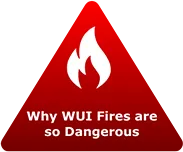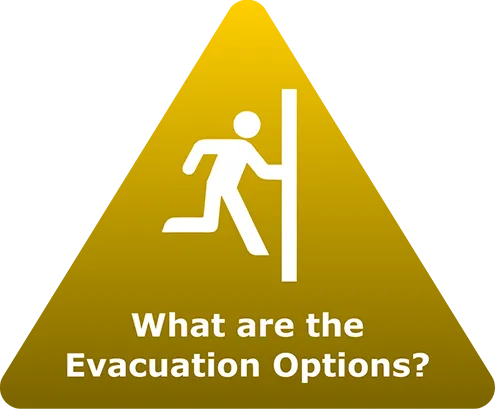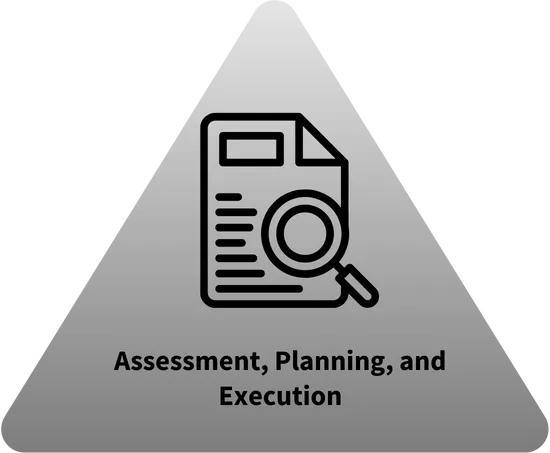
WUI Fire Evacuation and Sheltering Considerations - Assessment Planning and Execution

Build the plan before the fire starts
PLANNING
An emergency notification plan should work together with the decisions and expectations set forth by the evacuation plan.
NOTIFICATION PLAN
Considerations for the notification plan include:
- The means of notifying large fractions of the community should be identified
- Population density, demographics, and infrastructure.
- Possibility of an opt-out, rather than opt-in, notification system to increase participation rates.
- Critical care facilities and vulnerable populations that may need additional assistance.
The details of a notification plan, including the authority and procedure to issue alerts, message content and development, and selection/use of available notification technologies are important, but are beyond the scope of this site.
EVACUATION PLAN
- Under what conditions (what fire and when) should an evacuation be initiated?
- Who should be evacuated and where should they evacuate to?
The goal of the planning process is to identify and develop decision support criteria and associated action plans that answer these two questions for a range of possible fire scenarios.
Developing the Community Evacuation Plan
ADDITIONAL FIRE
CONSIDERATIONS
Additional alternative or supplementary ignition zones
might be developed in specific cases. The first is the
development of scenarios for lower fire spread rates,
again using the above approach. Such scenarios may
provide context for non-catastrophic events. Reliably
predicting fire spread is challenging; however, there could
be certain cases where topographic features and other
natural breaks may be used to refine or create "exclusion
zones" with the Green Zone. Fires in these exclusion zones
should not pose a threat to the community, although they
should be carefully monitored.
The development of
potential exclusion zones should carefully consider
extreme fire behavior and long-range spotting that can
take place over several miles. Refinements of fire
"restarting" after a large fuel break are beyond the scope
of the initial zone development and introduce
complexities and unknowns and that may increase risk by
inadvertently underpredicting detailed fire behavior that
may negatively influence evacuation decisions.
ADDITIONAL EVACUATION CONSIDERATIONS
Critical care facilities
Mobility impaired population
Lack of personal transportation
Evacuation of critical care facilities and hospitals is resource intensive. Simultaneous evacuation of multiple facilities and population groups may not be possible. Evacuation plans should include accommodation of patients on a full community evacuation. Additional preplanning should address evacuation assistance with the mobility impaired population and for those without access to personal transportation. Communities should consider the use of trained community volunteers for traffic management and assess the potential for leveraging existing infrastructure (e.g., buses/trains) for mass evacuations. Traffic Coordination with neighboring jurisdictions can help to avoid gridlock in surrounding communities from impacting the evacuation from the community in the path of the fire.
IMPLEMENTATION
CONSIDERATIONS
There a three limitation key considerations to the implantation of TFRAs.
- As discussed previously, there are currently no standards for TFRAs, safety zones or fire shelters
- NIMS and ICS are not currently set up to integrate TFRAs into operations.
- For the entire system to work, reliable estimates are needed on community evacuation times and fire spread rates.
While not eliminating life safety risk, the implementation of a leave early or shelter in TFRA approach using reliable estimates and the use of safety factors, can significantly enhance resident and first responder life safety.









